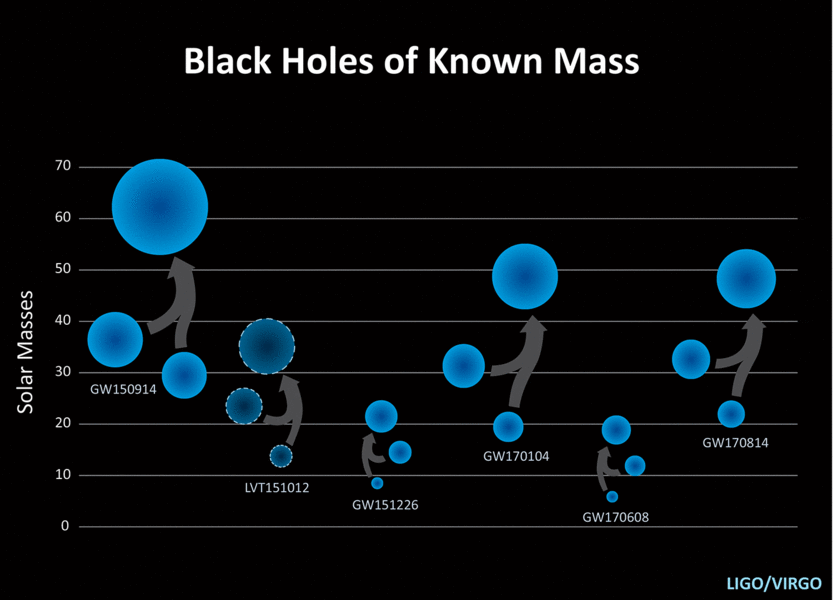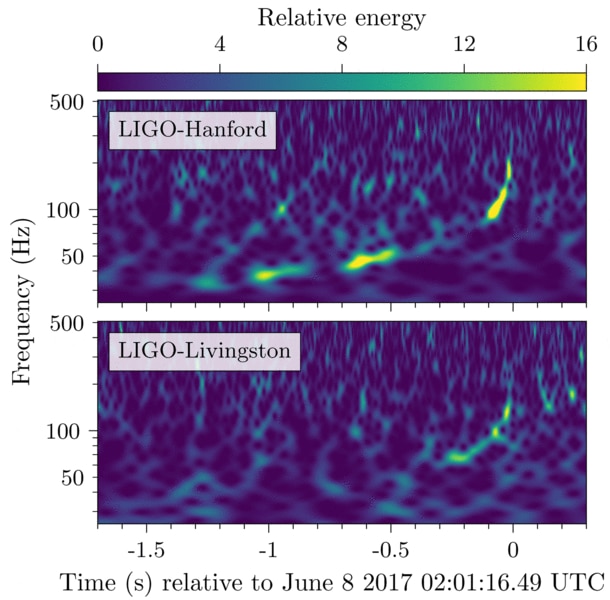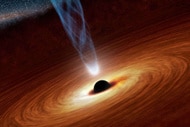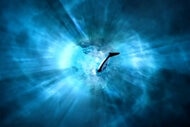Create a free profile to get unlimited access to exclusive videos, sweepstakes, and more!
Ho hum, just another black hole merger that blasted out soul-crushing amounts of energy and shook the fabric of reality
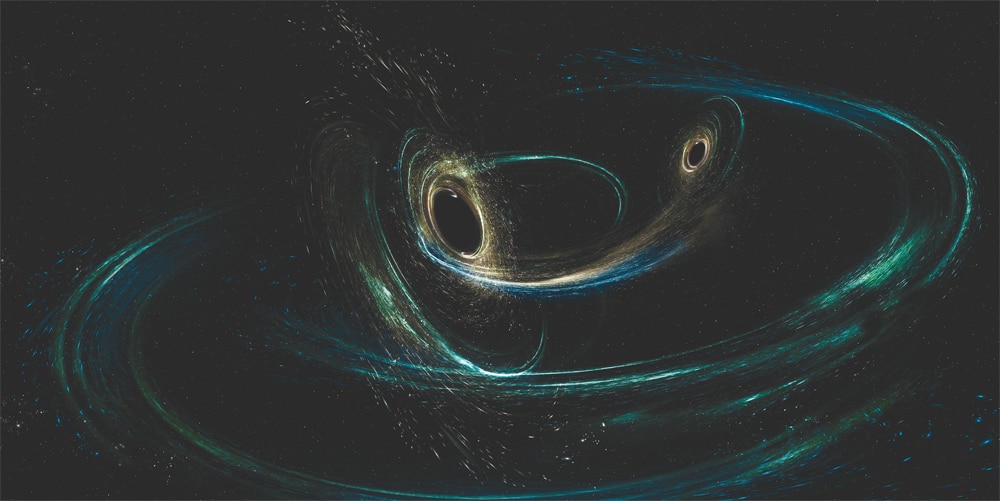
About 1.1 billion years ago, two black holes coalesced. They had danced around each other for billions of years, losing energy and swinging closer, until they could no longer resist each other's embrace. Spiraling in, they merged, and released a quaking shout of gravitational waves that echoed across the cosmos.
After traveling through space for eons, the diminished wave from that colossal catastrophe passed through the Earth … as well as the detectors of LIGO, the Advanced Laser Gravitational-Wave Observatory. It caused a set of mirrors to oscillate, quivering back and forth through roughly 1/1000th the width of a proton, a seriously Lilliputian amount. But, with modern engineering, it was enough. Astronomers had discovered another newly formed black hole, grown from the merger of two smaller ones, the fifth time such a thing has ever been seen.
These waves distorting the shape of space and flow of time swept by us on June 8, 2017, so the event was dubbed GW170608.
There are a few remarkable things about this discovery that bear further thought.
One was that this was the least massive merger seen so far; the signal indicates the two black holes had masses of 12 and 7 times the Sun's mass. All the other mergers detected so far have had at least one black hole with 20 solar masses. Even combined, these two were lighter than that.
Not that this was a small event. When two black holes merge, a percentage of their mass is converted into the energy of gravitational waves, the ripples that stretch and contract space and time themselves (you can read all about how this works in an article I wrote about the very first detection). In this case, nearly an entire solar mass was converted into energy. Mind you, this is a staggering, mind-crushing amount: Over 2000 times the Sun's entire lifetime output of energy over ten billion years, and these merging black holes released it in literally two seconds.
Two seconds.
So yeah, that's remarkable thing one.
Remarkable thing two is that this merger was detected while one of the LIGO sites was doing maintenance! LIGO consists of two observatories; one in Washington State and one in Louisiana. Both had just undergone a maintenance period after a second observing run earlier in the year, and Louisiana's site was back up and running after about a couple of weeks.
The Washington site was still doing some testing, though, when the waves from the merger passed through. Amazingly, they were still detectable! To test their detectors, engineers were vibrating the mirrors at the Washington site at the time, mimicking what would happen if a gravitational wave passed through them. You'd think would make the vibrations from the actual gravitational waves impossible to see. However, the waves from the black hole have a particular frequency at a given time, and so engineers were able to ignore the artificial test frequencies and focus on the real ones from the merger (like ignoring the background babble in a crowded room to focus on what the person in front of you is saying). When they did that, the event was just detectable.
So the fact that they were able to confirm this at all is pretty cool. Amazing.
But the third remarkable thing is what has me the most bemused. This incredible event — the consumption of two of the Universe's strangest and most dangerous objects, the blast of energy that dwarfs the luminosity of entire galaxies, the fundamentally bizarre nature of this event at all — was announced without fanfare or press conference. It was simply noted on Twitter by the LIGO folks, linking to their webpages and the journal paper with more info.
It was, in many ways, routine.
How did that happen?
Look. Einstein predicted the existence of gravitational waves in 1916 based on his theory of relativity (the physicist Poincaré also proposed them earlier, in 1905, based on a different idea). But they are so weak and difficult to detect that the first wasn't discovered until 2015.
It took a century to find them, after decades of work. So of course that discovery was hailed as groundbreaking. Because it was! The second detection came a few months later, and was also important because, in general, it showed that the first wasn't a fluke. The third (in January 2017) was the farthest merger ever detected, marking that event as special. Astronomers were working on GW170608 when a stronger one was detected, not only by LIGO but also by a third detector, part of the Virgo collaboration, for the first time. Then in August 2017 two merging neutron stars were detected, which was also seen using actual light (from radio waves through gamma rays), and that was an extremely big deal.
Poor GW170608 was left by the wayside. Once the work for the more exciting neutron star pair event was done, the astronomers could return to the GW170608 data and publish.
And it was … quotidian. Sure, it was somewhat unusual that the black holes were less hefty than from the other events, but we expect that'll happen; black holes come in all sizes, from three times the Sun's mass up to billions. Also, GW170608 came from black holes that were closer to us than the others seen, but the lower masses (and other physical characteristics of the merger) meant the event wasn’t as energetic as average. So all in all, it was … routine.
And that — to add another layer to all this — is incredible to me. The fact that this remarkable event is unremarkable is remarkable! We've entered a new age of astronomy, where we can detect the shaking of the very fabric of the Universe itself, but the news of it barely made a ripple.
It's certainly odd that we hairless apes sometimes need to be entertained by the shiny and new, while the routine, no matter how astonishing, flows past us relatively unnoticed. That is most certainly a conundrum for those who communicate science.
Changing human nature may be beyond our abilities at the moment, and we must acquiesce and adapt to that. But in some sense this isn't altogether a bad thing. Because this also means that, even though we struggled mightily for a century to understand and finally detect these most ethereal of physical phenomena, now, just a couple of years after that achievement … we kinda have it down. We can do this all the time now.
While that may be a challenge for science communication, it is a triumph for science. And that I will happily accept.
